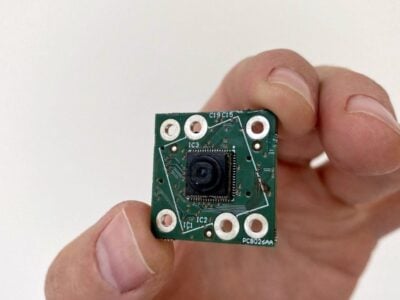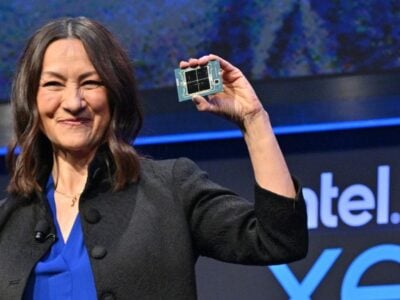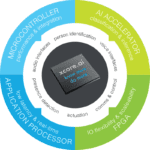
CEO interview: Paul Wells of SureCore on low power memory and China
Paul Wells, CEO of SureCore talks to Nick Flaherty about the recent technology advancements in SRAM memory and the business in China.
SureCore has developed PowerMiser Plus which takes the SRAM voltage below 0.5V for the first time and one of the first customers is a Chinese company for an edge AI chip design.
Despite concerns over global trade wars and security, the Chinese market is vital for the business, he says.
“About 75% of our business is with Chinese companies,” he tells eeNews Europe. “My view is there’s a lot of panicking that the Chinese economy will transcend that of the US and the West doesn’t really like that. So they are trying to hold the Chinese economy back but that is doomed to failure as they have so many STEM graduates. For semiconductors the future is in Asia, it’s as simple as that.”
“There isn’t the same level of design activity in the West – we do have some customers in US and Europe but it’s the Chinese that are jumping ahead with what they want to achieve in cutting power budgets and this is our sweet spot, and we have been banging that drum for ten years,” he said.
“It’s great working with the Chinese as they are very open but you have to jump through lots of hoops, give lots of technical information and if you get through the technical due diligence there’s usually a purchase order at the end of it.”
- sureCore develops in-memory computing for edge AI
- SureCore memory supports ‘listen through’ in active noise cancellation
PowerMiser Plus is a key example of this, licensed to edge AI chip designers for ultra low power operation.
“More and more customers are responding to market pressures to deliver extended battery lives. In doing so, they can no longer ignore the significant power drain of their embedded SRAM,” said Wells, “This is especially true in the edge-AI space where pattern matching requires heavy SRAM usage.”
Key to delivering the power savings demanded is the wholesale shift of the application to a lower operating voltage. This is fine for logic which can still deliver relatively high performance but memory is a different matter entirely and needs special attention. The first customer for PowerMiser Plus actually came through a US design house.
“We first got in touch with them via the East coast of the US but they were working for a Chinese company,” he said.
“The design is essentially a camera sensor attached to some AI with a processor and they want a five year battery life so they can place it anywhere in a room to detect if someone falls and we are just kicking that project off – it’s about being able to operate at a low voltage with sampling then ramp the voltage and the chip jumps into life for the AI processing,” he said.
Security of IP is no longer an issue he says.
“A few years ago we were genuinely worried about IP but now it seems the Chinese have made giant leaps forward with proper NDAs and contract agreements and we don’t believe anyone is reverse engineering our IP,” said Wells. “The main threat to our business is if someone decides our technology is dual use then maybe we would be in trouble.”
- SureCore expands into control logic for quantum
- SureCore moves towards design services
- Nordic Semiconductor buys its memory supplier
Another challenge is competing with the memory compilers from the large EDA companies that are often bundled with other IP.
“Competing with free in a bundle is a challenge – we win in the technical assessment but no one got fired for buying from the big guys,” he said. “It isn’t an easy decision for a product manager to take but what we are finding now is the pressure to cut power is so great they have to do something and that gives us an opportunity for a conversation which has got us to PowerMiser Plus.”
“This is the problem with IP with all the bells and whistles which then means you switch features on and off in the compiler. Now people are saying that this doesn’t work any more for low power.”
This leads to more custom work. “We do more custom work than off the shelf IP but we don’t really know as companies keep their cards close, you don’t know what the applications are,” he said.
“One of the key things we have noticed is that companies have woken up to the fact that the virtual ASIC model is back in vogue again. A lot of the design services are capitalising on their IP portfolios and providing ASIC solutions and they need memory.”
Quantum control
“We’ve always focussed on single port synchronous SRAM, even for cryogenic applications, not even dual port, as we rarely see demand for dual port SRAM apart from register file designs. Cryogenic memories are built from high Vt (HVT) transistors for low leakage but – as you go to 77K all the headroom disappears so the bit cell isn’t an option. So we build the memory from a low Vt (LVT) bit cell we built ourselves,” he said.
“We have spoken to one of the two big foundries about them providing an LVT bit cell and I think the foundries are keeping a watching eye on this, and FDSOI is more amenable to these processes but it depends where we are in the semiconductor cycle for the investment,” he said.
Memory expansion
“Our sweet spot is the wearable and edge IoT markets and if we could sell 50 to 100 licenses a year we would have a very nice business. Once you become recognised as the market leader in the space the barrier to adoption becomes less,” he said. China is a key market for this.
“We have a license deal on a 40nm ULP for our Everon memory with a wearables company and we are now just about to license to Chinese customers for AIoT and home automation.”
“We are onto our second Taiwanese rep now and its took us two or three reps in China before we found this one. Ideally we’ll set up an office in China or a joint venture, but again that’s risky but that’s a problem for the whole of the semiconductor industry, Asia has the design starts and the drive to move forwards.”
“We did a big project with the tier one social media company and what 40Mbyte memory subsystem with custom memory and LV interconnect and intelligent sleep modes with 40% sleep modes but the project didn’t go forwards but we are talking to them now about advanced hearing aids but we are seeing tens of thousands of redundancies in those companies.”
“The key thing that we are trying to achieve is to get the power message out there and more and more people are realising that’s the only thing they can do,” he said.
www.surecore.com
Other exclusive CEO interviews on eeNews Europe
- Ian Lankshear of EnSilica on custom chips
- Richard Lind of IAR on design tools
- Bytesnap Design at 15
- Calista Redmond of RISC-V International at Embedded World
- Mark Lippett of XMOS on leveling up
- Americo Lemos of IQE on scaling up
- Scott White of PragmatIC Semiconductor on the UK’s first 300mm fab
- Nat Edington of Dukosi on building a fabless semiconductor firm
- Rudi De Winter on X-fab selling out capacity for the next three years
 If you enjoyed this article, you will like the following ones: don't miss them by subscribing to :
eeNews on Google News
If you enjoyed this article, you will like the following ones: don't miss them by subscribing to :
eeNews on Google News





